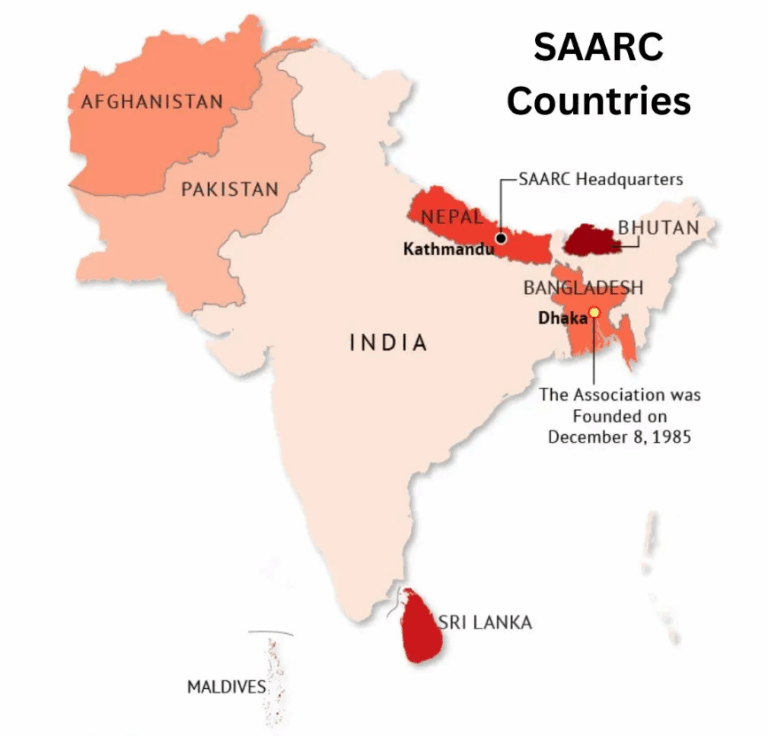India’s Success in Reducing Maternal Mortality
- The Maternal Mortality Ratio (MMR) in India declined to 93 per lakh live births in 2019-21 from 97 in 2018-20, and 103 in 2017-2019, according to the latest data released by the Office of the Registrar General and Census Commissioner of India.
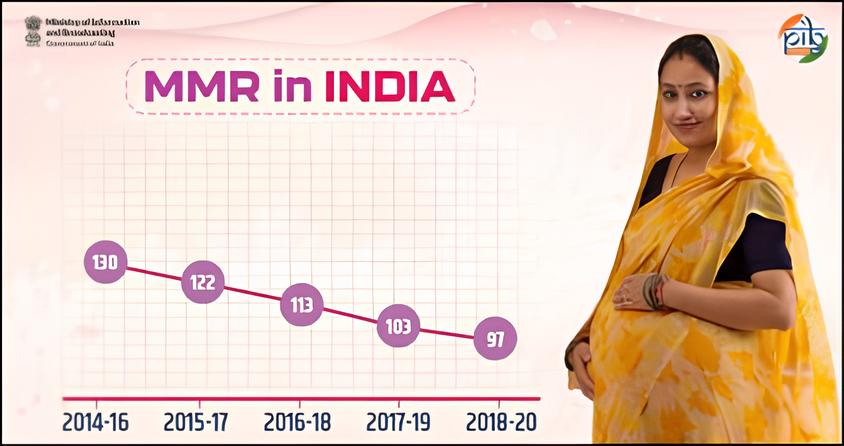
Introduction
- India has made notable progress in improving maternal health, as reflected in the latest Maternal Mortality Ratio (MMR) statistics. According to data released by the Office of the Registrar General and Census Commissioner of India, the MMR has declined to 93 per 1 lakh live births during 2019-21, down from 97 in 2018-20 and 103 in 2017-19.
- This sustained reduction highlights the combined efforts of government policies, healthcare infrastructure improvements, and increased awareness of maternal health services.
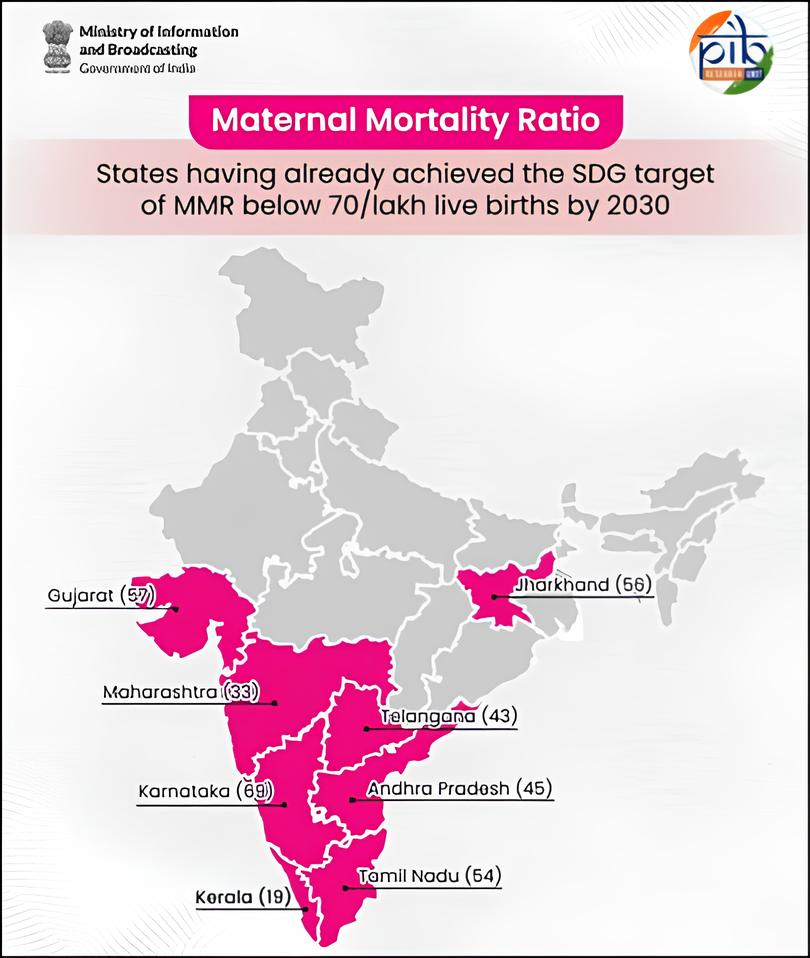
Understanding the Maternal Mortality Ratio
- The Maternal Mortality Ratio (MMR) is a critical indicator of the reproductive health of women in a country.
- It is defined as the number of maternal deaths per 100,000 live births during a specific time.
- Maternal death is classified by the World Health Organisation (WHO) as the death of a woman during pregnancy or within 42 days of the termination of pregnancy, from any cause related to or aggravated by pregnancy or its management.
- The Sustainable Development Goals (SDGS) set by the United Nations aim to reduce the global MMR to less than 70 per 100,000 live births by 2030. India’s declining trend is a positive step toward achieving this target.
Current Trends and Regional Disparities
- Despite the overall decline in India’s MMR, certain states continue to report alarmingly high maternal death rates.
The highest MMR figures were recorded in
- Madhya Pradesh: 175
- Assam: 167
- Uttar Pradesh: 151
- Odisha: 135
- Chhattisgarh: 132
- West Bengal: 109
- Haryana: 106
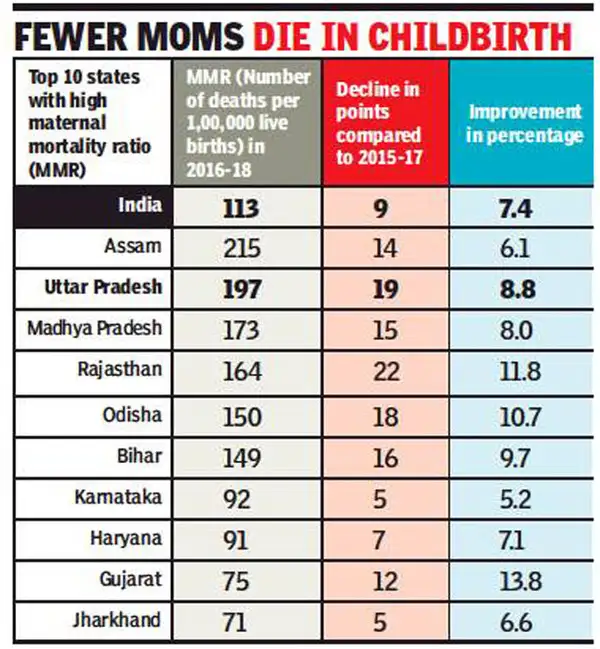
- The data also reveal that the highest number of maternal deaths occurs in the 20-29 years age group, followed by the 30-34 years age group.
- These statistics underline the importance of focusing on women’s health during their peak reproductive years.
Major Causes of Maternal Death
- According to the WHO, more than 700 women globally die every day due to preventable causes related to pregnancy and childbirth. In 2023 alone, maternal deaths occurred almost every two minutes worldwide. Key factors contributing to maternal deaths in India include:
Complications during pregnancy and childbirth
- Unsafe abortions
- Lack of timely medical intervention
- Inadequate access to skilled healthcare professionals
- Low- and lower-middle-income countries, including parts of India, account for over 90% of maternal deaths globally.
Government Initiatives Driving Improvement
India’s progress in reducing MMR can be attributed to various flagship programs and healthcare initiatives, including:
1. Pradhan Mantri Surakshit Matritva Abhiyan (PMSMA): Providing quality antenatal care to pregnant women on a fixed day every month.
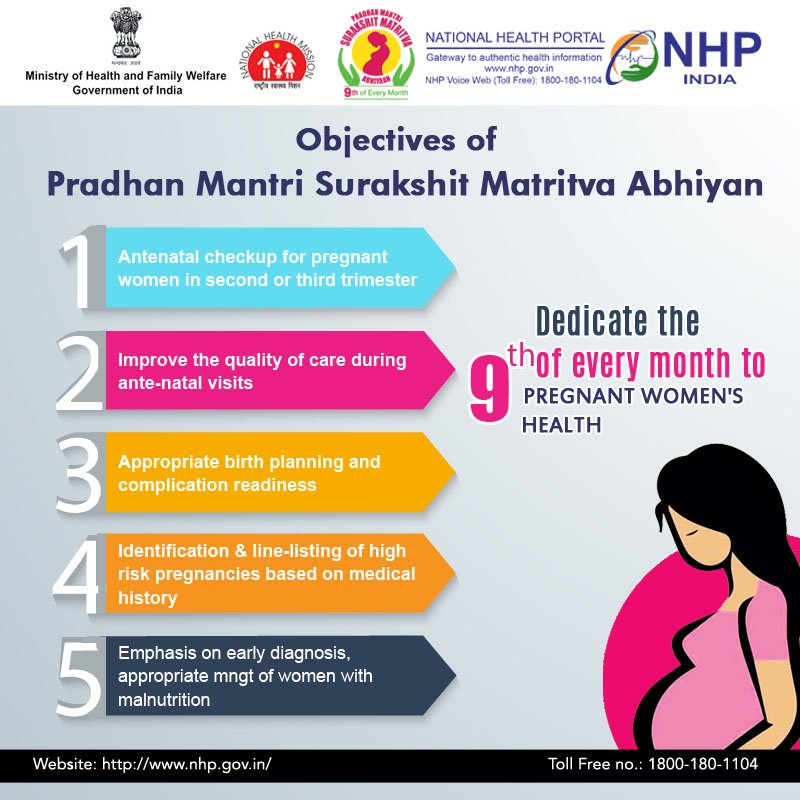
2. Ayushman Bharat – Health and Wellness Centres: Providing comprehensive primary healthcare services, including maternal and child health services.
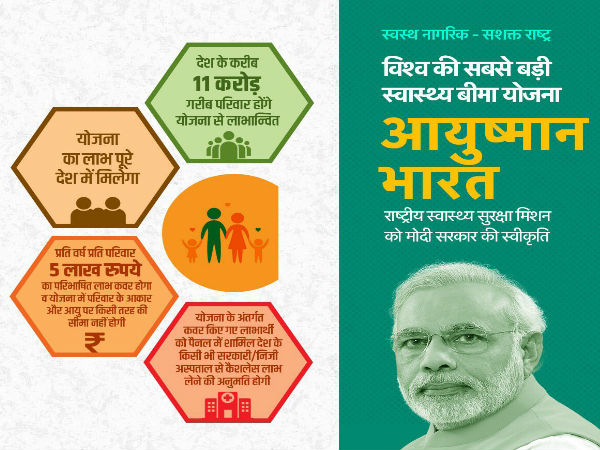
3. POSHAN Abhiyaan: Focused on improving nutritional outcomes for pregnant women and children.
These schemes have enhanced institutional deliveries, expanded access to skilled birth attendants, and improved antenatal and postnatal care.
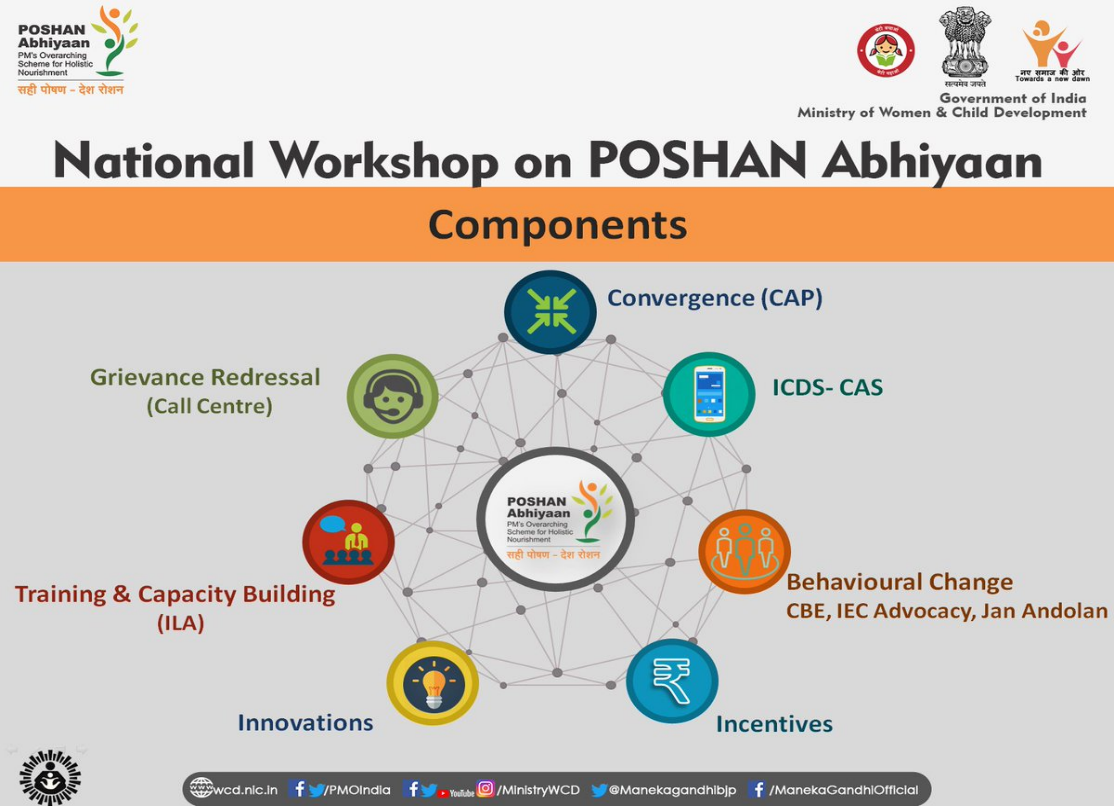
Challenges That Still Need Attention
- While the declining MMR trend is promising, several challenges remain:
- High MMR persists in economically weaker states due to poor healthcare infrastructure.
- Rural and remote areas still lack adequate access to emergency obstetric care.
- Awareness about government schemes and maternal health services remains low among marginalised communities.
PRELIMS PRACTICE QUESTIONS
Question: Regarding India’s performance in reducing Maternal Mortality Ratio (MMR), consider the following pairs:
| Initiative | Primary Objective |
| 1. PMSMA (Pradhan Mantri Surakshit Matritva Abhiyan) | Provision of postnatal care for women in remote areas |
| 2. Ayushman Bharat – Health & Wellness Centres | Reduction of anaemia and improvement in maternal nutrition outcomes |
| 3. Ayushman Bharat – Health & Wellness Centres | Access to skilled birth attendance at tertiary care hospitals |
| 4. Janani Suraksha Yojana (JSY) | Promotion of institutional deliveries among poor pregnant women |
Which of the pairs given above are correctly matched?
A. 2 and 4 only
B. 1, 3 and 4 only
C. 1 and 3 only
D. 2, 3 and 4 only
Answer: A. 2 and 4 only
Explanation:
- Pair 1 is incorrect: PMSMA focuses on antenatal (not postnatal) care, delivered on a fixed day each month.
- Pair 2 is correct: POSHAN Abhiyaan targets nutrition, including anaemia reduction among pregnant women.
- Pair 3 is incorrect: Health & Wellness Centres (HWCs) offer primary care, not skilled birth attendance at tertiary hospitals.
- Pair 4 is correct: JSY incentivizes institutional deliveries, especially for economically disadvantaged women.
MAINS PRACTICE QUESTION
Question: India’s flagship schemes aimed at maternal health, such as PMSMA, POSHAN Abhiyaan, Ayushman Bharat, and Janani Suraksha Yojana, have contributed significantly to the decline in the Maternal Mortality Ratio (MMR). However, mismatches between scheme design and ground-level implementation remain a key challenge. Discuss with examples. (10 marks, 150 words)


